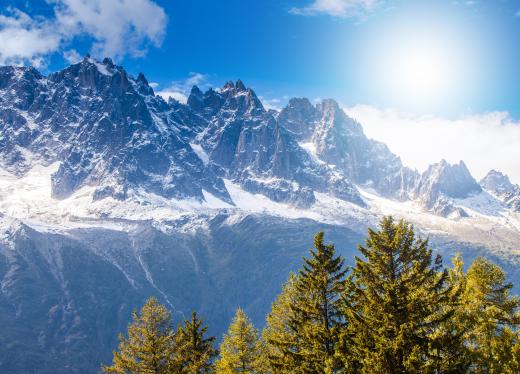What Is Altitude?
Altitude is also known as height, and it is often used to refer to the height above sea level. The world is divided into multiple altitude regions, from the lowest point near the ground and the highest point near the uppermost layer of the Earth’s atmosphere. It is difficult for humans to survive in very high altitudes and impossible at certain altitudes. In addition, food must be cooked according to special instructions due to altitude’s effect on cooking times and cooking temperatures.
Many people mean the land above sea level when referring to a place’s altitude. Elevation is a better term for that, however, because altitude is not limited to that definition. It takes on different meanings depending on its context; for example, aviation altitudes are much different from altitudes mentioned in a sports game.

Earth’s atmosphere is divided into five regions of altitudes, with troposphere, stratosphere, and mesosphere being the closest to the ground. Thermosphere and exosphere are higher than the previous three. The stratosphere is 31 miles (50 kilometers) above the ground and may be commonly heard in sayings such as, “He hit the ball out of the stratosphere,” meaning someone hit a ball quite far.

At very high altitudes, a person’s heart rate speeds up and his or her breathing comes more quickly. This effect is usually experienced in a severe manner by mountain climbers because the oxygen thins the further one climbs. After a certain point, a mountain climber must have additional oxygen in a tank to survive because there is no longer enough oxygen to keep the brain alive. Millions of people experience a mild form of altitude sickness each year because of how quickly humans can travel from low altitudes to high altitudes by vehicle. Mild cases can usually be overcome by allowing the body time to adjust to the higher height, but some people do not get over altitude sickness until they return to a height their body is used to.

In general, high altitude refers to locations above the mean sea level. Many people live in high-altitude areas of the world, but the slightly thinner oxygen level and greater atmospheric pressure affects the cooking time and temperature of foods. In addition, water boils faster at higher altitudes and evaporates faster. Many raw and prepared foods have instructions on the label specifically meant for people who cook food at high altitudes, but the cooking temperature and time of some foods may need to be researched.
AS FEATURED ON:
AS FEATURED ON:















Discussion Comments
@KoiwiGal - I've heard of people who set up their home so that they were essentially living in the conditions of high altitude without having to go anywhere, decreasing the pressure and so forth.
I imagine they probably have to decompress every time they exit and enter their house though, in order to avoid high altitude sickness (which, frankly, is inevitable anyway).
It seems kind of a crazy expense to me, for a little bit of edge over the competition, but I guess if everyone is doing it and you don't you'll end up failing.
It's interesting what kinds of combinations people try for when they are doing high altitude training. The favored method at the moment seems to be the "live high, train low" method, where people will live as much as possible at a high altitude, in order to get all the benefits from doing this (like increased red blood cell count, etc.) and training at a lower level.
I think the theory is that you'll be able to train much harder at a lower altitude, because you won't be gasping for breath, and also it's generally the same altitude that the competition will be at.
It's not just the cooking times that are important to be aware of when you are at high altitudes. The fact that water boils faster and at a lower temperature means you need to be more aware of how to boil it for purification as well. A general rule of thumb some people follow is to simply bring water to a boil and by the time it boils, most of the bacteria will be dead.
But you have to keep it boiling for a while longer if you're doing this on top of a mountain, because the temperature is lower.
It's basically the same thing when you're cooking on the mountain. Unfortunately water simply won't get any hotter than boiling point, because it turns to steam, so when you're cooking in water, you're essentially cooking with a lower temperature and everything takes longer (even though, since the water starts boiling faster, it seems like it should cook the food faster).
Post your comments